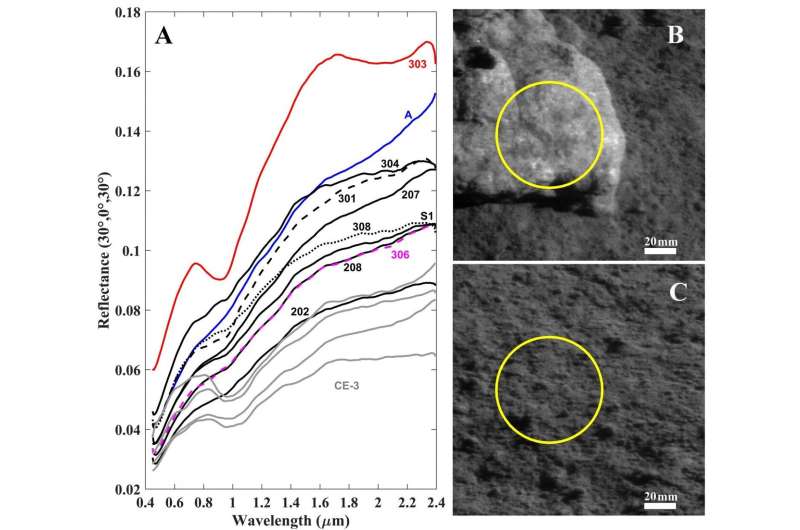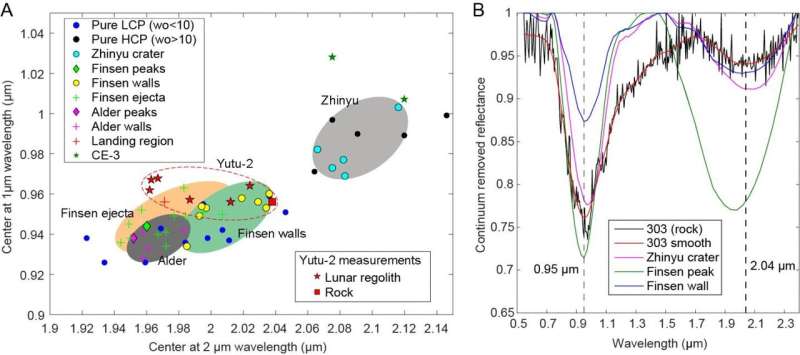Olivine-norite rock detected by Yutu-2 likely crystallized from the SPA impact melt pool

The South Pole-Aitken (SPA) is the largest and deepest basin on the Moon, theoretically opening a window into the lunar lower crust and likely into the upper mantle. However, compositional information of the SPA basin was mainly obtained from orbital remote sensing. Chang'E-4 landed in the SPA Basin, providing a unique chance for in situ probing the composition of the lunar interior. The landing site is located on ejecta strips radiating from Finsen crater, which lies ~135 km to the northeast. The lunar surface at the landing site consists of a very homogenous regolith overlain by few scattered rocks.
A surface rock and the lunar regolith at 10 sites along the rover Yutu-2 track were measured by the onboard Visible and Near-Infrared Imaging Spectrometer in the first three lunar days of mission operations. In-situ spectra of the regolith have peak band positions at 1 and 2 μm, similar to the spectral data of Finsen materials from the Moon Mineralogy Mapper, which confirms that the regolith's composition of the landing area is mostly similar to that of Finsen ejecta. The estimated modal composition of the lunar regolith is dominated by agglutinates, plagioclase and pyroxenes with more low-calcium than high-calcium, inconsistent with mare basalts. Thus, the surface materials at the landing site are predominantly ejecta from neighboring craters, with little contribution from the underlying mare basalt. Our observations are also supported by topographic features.
The rock spectrum shows similar band peak positions, but stronger absorptions, suggesting relatively fresh exposure. This rock is likely representative of the original bedrock in the Mg-Pyroxene Annulus of SPA basin. This rock is >20 cm in size, sitting on the regolith surface. No grains can be unambiguously recognized on the surface based on the image with spatial resolution of 0.6mm/pixel, suggesting a fine- or medium-grain-size texture (<3 mm). Our modeling results suggest the rock is composed of 38.1 ± 5.4% low calcium pyroxene, 13.9 ± 5.1% olivine and 48.0 ± 3.1% plagioclase, referred to as olivine-norite. The plagioclase-abundant and olivine-poor modal composition of the rock is inconsistent with the origin of the mantle, but representative of the lunar lower crust. Alternatively, the rock crystallized from the impact-derived melt pool formed by the SPA impact event via mixing the lunar crust and mantle materials. This scenario is consistent with fast cooling thermal conditions of a shallow melt pool, indicated by the fine- to medium-sized texture of the rock, and the SPA impact melting model.

More information: Honglei Lin et al, Olivine-norite rock detected by the lunar rover Yutu-2 likely crystallized from the SPA impact melt pool, National Science Review (2019). DOI: 10.1093/nsr/nwz183
Provided by Science China Press





















